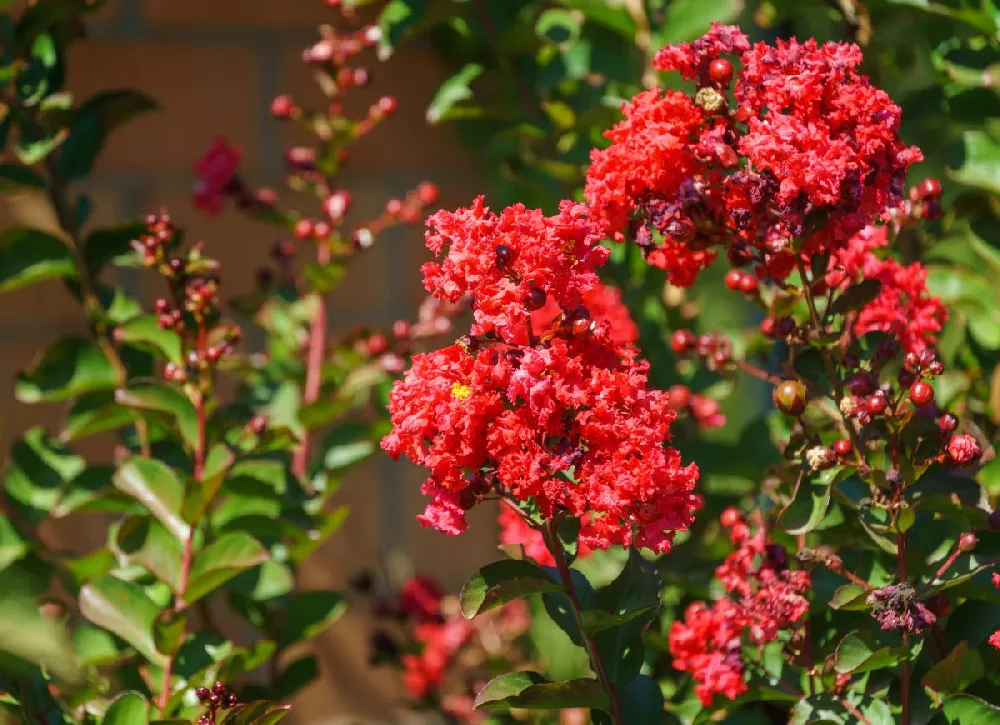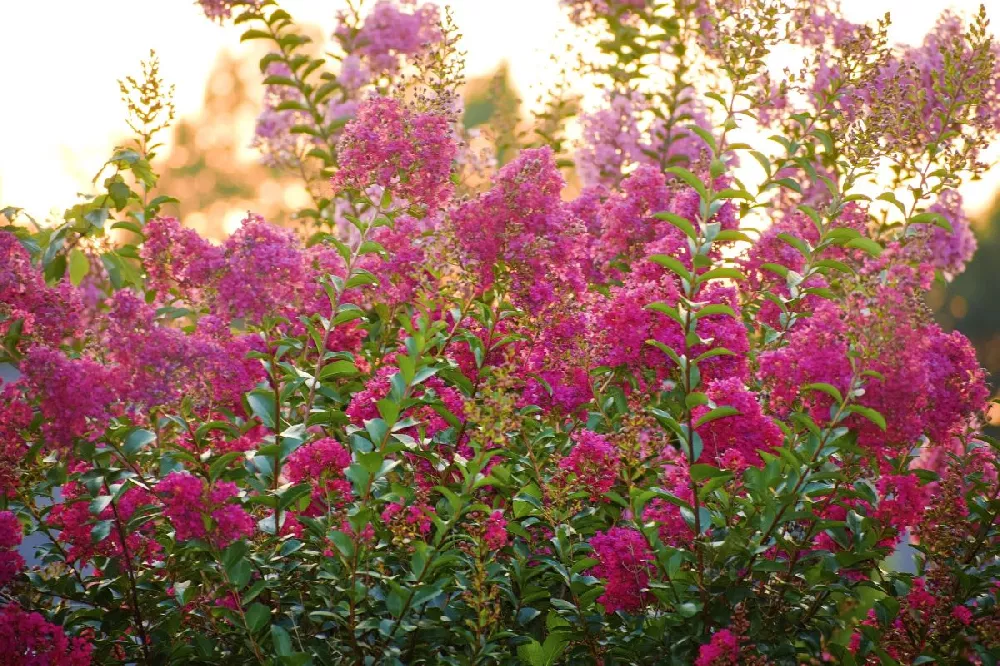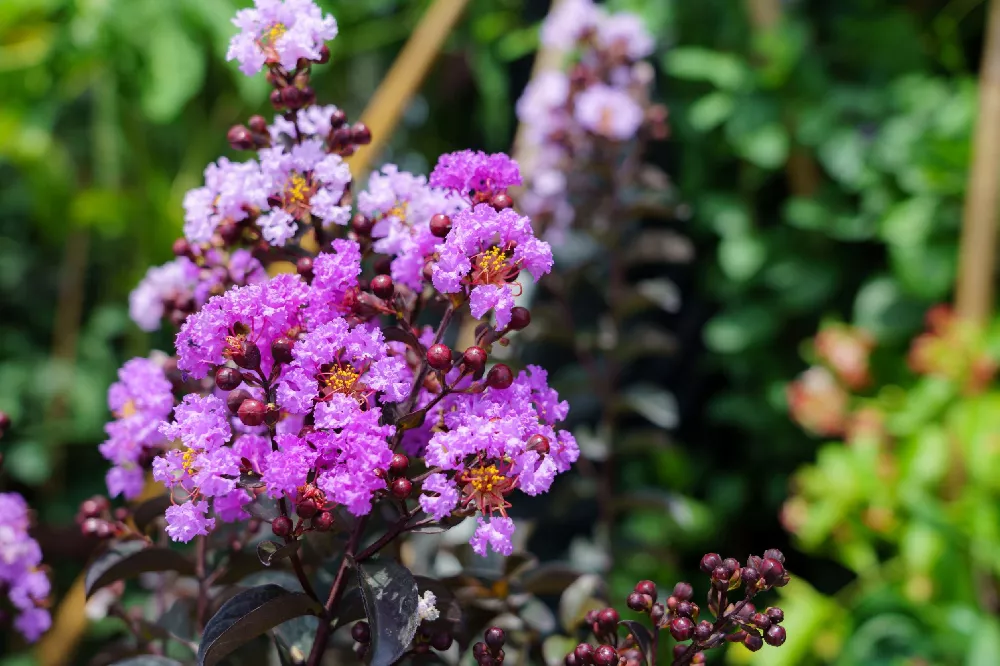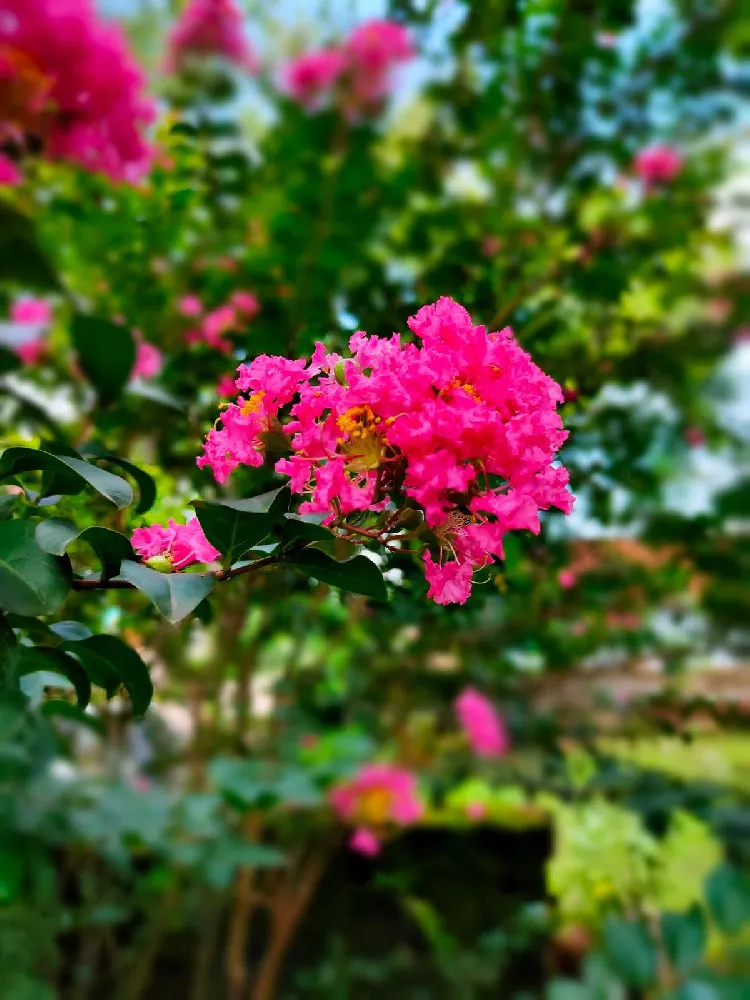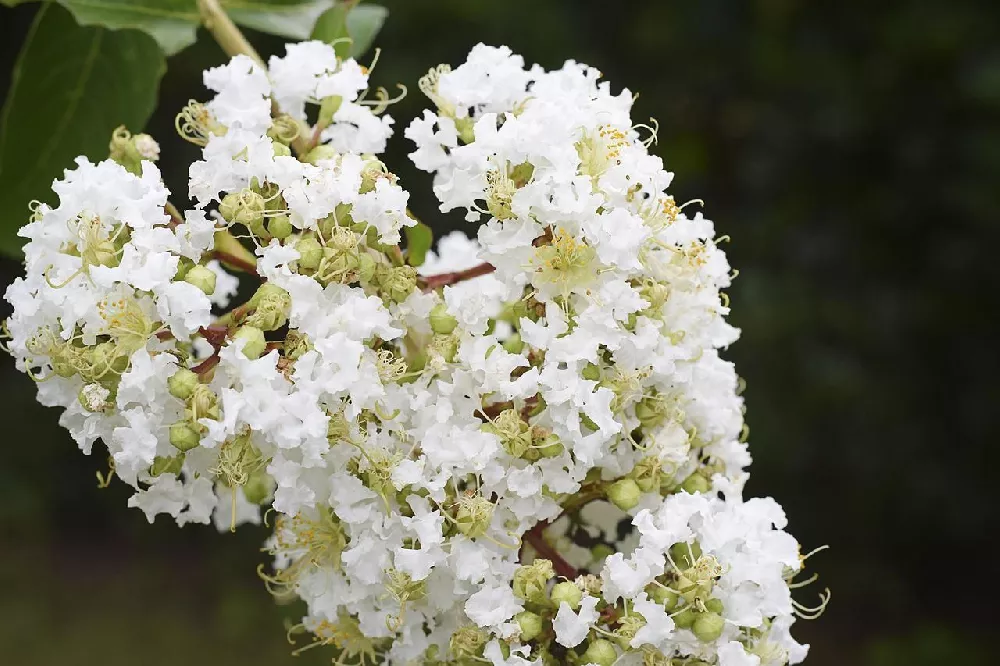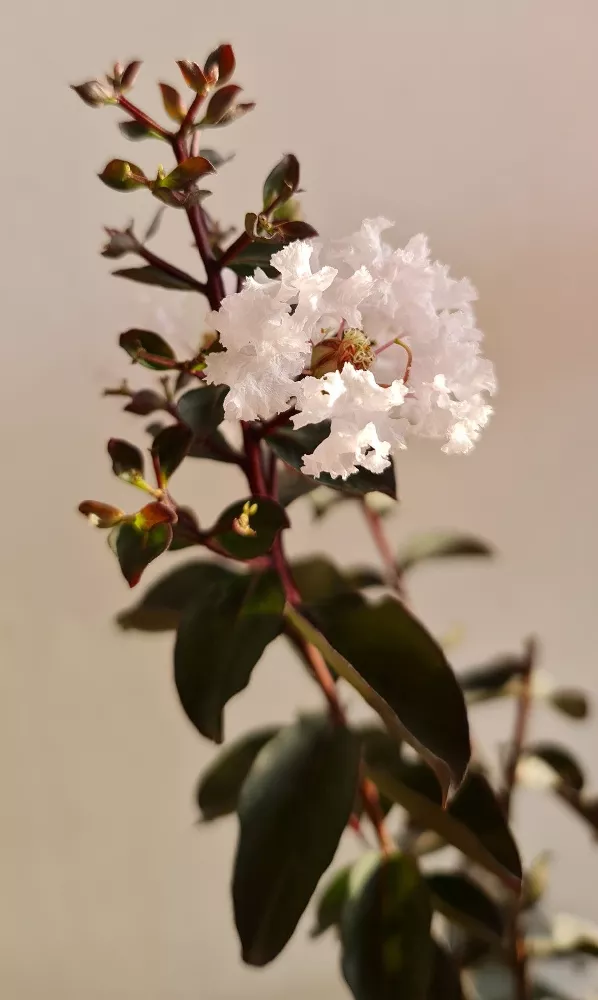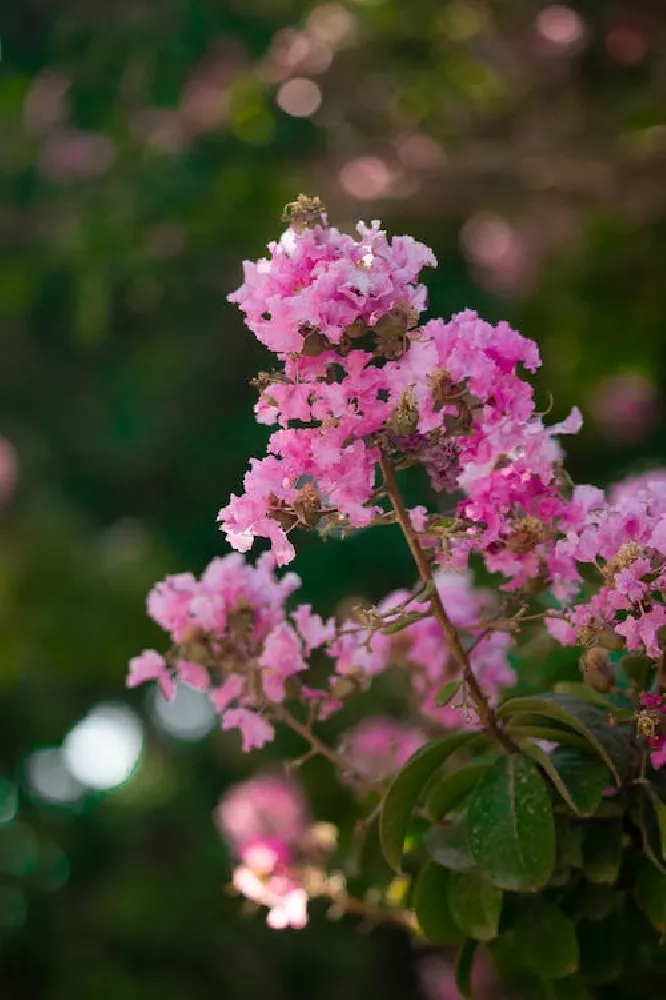Petite Red Imp™ Crape Myrtle Tree for Sale - Buying & Growing Guide
Lagerstroemia indica 'Monimp,' better known as the Petite Red Imp™ Crape Myrtle Tree, is one of the smallest crape myrtle varieties you can grow. However, despite its small stature, the Petite Red Imp™ Crape Myrtle Tree is more than capable of delivering a deep pop of color to your garden. With the right care, each year, this lovely plant will bloom with deep red flowers that last for most of the summer months.
- The Petite Red Imp™ Crape Myrtle Tree has incredible deep red flowers.
- This tree has a small size, making it suitable for many growing locations.
- The Petite Red Imp™ Crape Myrtle Tree can survive drought and some mild pollution.
Enter your zip code to find nearby stores that may carry this plant.
Plant Care
Sunlight

You should grow your Petite Red Imp™ Crape Myrtle Tree in an area that receives full sunlight.
Watering
Your Petite Red Imp™ Crape Myrtle Tree will need to receive water when the first three inches of soil have dried out.
Fertilizing

Fertilize your Petite Red Imp™ Crape Myrtle Tree once per year in spring using a general-purpose fertilizer.
Planting and Care
Planting instructions
There are two main growing requirements that you should keep in mind while choosing a growing location for your Petite Red Imp™ Crape Myrtle Tree. First, this plant needs to grow in an area that receives full sunlight, meaning six hours of exposure per day or more. Second, the soil in which this plant grows must have good drainage. As long as those conditions are in place, you can plant your Petite Red Imp™ Crape Myrtle Tree in a hole that is as deep as the root ball is tall and about twice as wide.
Watering and nutrients
Water this plant often enough during the establishment period to maintain consistent soil moisture. Following the first season of active growth, your Petite Red Imp™ Crape Myrtle Tree will develop decent drought tolerance. However, this plant will perform best if you give it some water whenever you notice that the first three inches of soil have become dry. To feed this plant, all you need to do is apply a balanced fertilizer, such as one with a 10-10-10 nutrient blend, once per year during the early spring.
Pollination
Your Petite Red Imp™ Crape Myrtle Tree will begin opening its blooms during early summer, and will likely continue blooming until the fall arrives. Throughout that long bloom period, many pollinators, including honey bees, will arrive to pollinate this plant. Pollination typically occurs quite easily for the Petite Red Imp™ Crape Myrtle Tree since it is self-fertile, meaning that a single plant can pollinate itself. However, you won’t need to worry about pollination when growing this plant since its fruits are not ornamentally appealing or commonly eaten.
Pruning
As is the case for nearly all crape myrtles that you’ll come across, the Petite Red Imp™ Crape Myrtle Tree is a plant that sets its flower buds on new growth. This means that pruning during early spring is permissible, as you won’t risk cutting off any flower buds that are set to bloom during the growing season. When pruning, ensure that your tools are as sharp and sterile as they can be. Your main goal during pruning should be to remove any branch that is dead, damaged or diseased.
Pests, diseases and animals
There are a few pests and diseases that can harm your Petite Red Imp™ Crape Myrtle Tree, which you should watch out for when caring for this plant. Some of the most common pests that will infest this plant are Japanese beetles, aphids, scale insects and ambrosia beetles. However, the Petite Red Imp™ Crape Myrtle Tree is often quite capable of resisting and recovering from such pests. Regarding disease, the Petite Red Imp™ Crape Myrtle Tree can contract root rot, powdery mildew, black spot, blight and canker, among other complications.
Achieving maximum results
Pruning during the early stages of your Petite Red Imp™ Crape Myrtle Tree’s life can have a significant impact on how this plant develops over the following years. One of the best approaches for pruning while this plant is young is to encourage a few main stems to develop. As your plant grows, it is also helpful to remove any branches that are exceptionally long and leggy compared to the others. This allows your Petite Red Imp™ Crape Myrtle Tree to maintain a balanced and structurally sound form.
FAQs
How large does the Petite Red Imp™ Crape Myrtle Tree grow?
In most cases, the Petite Red Imp™ Crape Myrtle Tree will grow to be about five feet tall by five feet wide at maturity. As such, this tiny crape myrtle can fit in even some of your more cramped planting areas. However, while this plant is small, its appearance is quite impactful, especially when you grow multiple of them close to one another, which results in a broad swath of color during the bloom time.
Where does the Petite Red Imp™ Crape Myrtle Tree grow?
The Petite Red Imp™ Crape Myrtle Tree has a relatively limited growth range. This plant is only hardy throughout zones seven through nine, which means that those who live in the colder regions of the United States will have difficulty growing this plant outdoors. By contrast, the Petite Red Imp™ Crape Myrtle Tree will likely thrive in the southern and western parts of the United States, including states such as California, Texas and Florida.
What does the Petite Red Imp™ Crape Myrtle Tree look like in the fall?
While the summer flowers of a Petite Red Imp™ Crape Myrtle Tree are its most impressive feature, this plant's leaves can also be impressive, particularly during fall. As the growing season draws to a close, the green leaves of your Petite Red Imp™ Crape Myrtle Tree will usually turn a copper color. Eventually, those leaves will fall to reveal the entirety of this plant's bark, which is also attractive due to its silvery shade.
Compare Similar Products
You can't add more Product Name - Product size to the cart.
OK